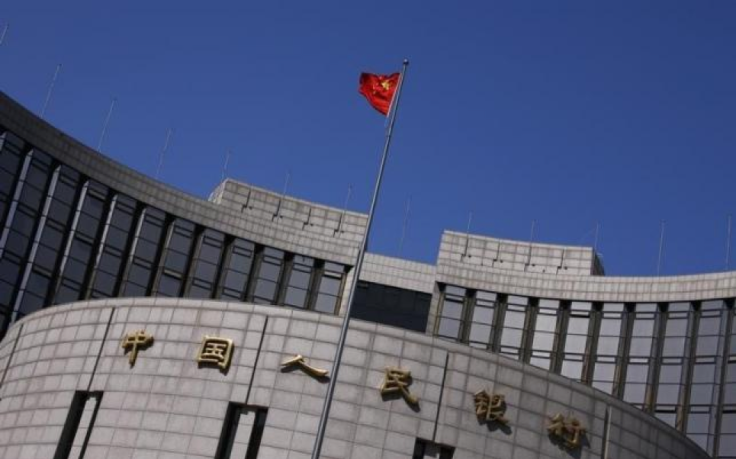China’s Central Bank Cuts Reserve Requirement Ratio By 100 Basis Points To Combat Slowdown

(Reuters) -- China’s central bank Sunday cut the amount of cash that banks must hold as reserves, the second industrywide cut in two months, adding more liquidity to the world’s No. 2 economy to help spur bank lending and combat slowing growth. The People’s Bank of China (PBOC) lowered the reserve requirement ratio (RRR) for all banks by 100 basis points, to 18.5 percent from 19.5 percent, effective April 20, the central bank said in a statement on its website.
The latest cut, the deepest single reduction since the depth of the global crisis in 2008, shows how the central bank is stepping up efforts to ward off a sharp slowdown in the economy.
“The size of the cut is more than expected,” said Shenwan Hongyuan Securities analyst Chen Kang. “It’s going to release around a trillion yuan ($160 billion) [in liquidity] at least.”
Burdened by a property downturn, factory overcapacity and local debt, China’s growth is expected to slow to a quarter-century low of around 7 percent this year from 7.4 percent in 2014, even with expected additional stimulus measures.
However, the last RRR cut was seen as more defensive by some economists, as it served primarily to offset increasing capital outflows that were exerting a drain on the money supply, making it difficult to guide rates down.
“The amplitude of the reduction reflects a more aggressive policy signal,” said Xie Yaxuan, macroeconomics research director at China Merchants Securities. “The reduction should help make up for the negative growth of foreign exchange in the first quarter, which created a hole in the monetary base,” he said.
The central bank also announced targeted RRR cuts: an additional 100-basis-point (bps) cut for rural credit cooperatives and village banks, as well as a 200-bps cut for the China Agricultural Development Bank, one of China’s major policy lenders. The PBOC last cut the RRR for all commercial banks by 50 bps Feb. 4, the first industrywide cut since May 2012.
The central bank has also cut interest rates twice since November in a bid to lower borrowing costs and spur demand, but while short-term money rates have come down in recent weeks, long-term lending to the real economy has not shown much sign of reaction.
“Real interest rates are extremely high, and they are also quite high relative to returns,” said Arthur Kroeber, head of research at Gavekal Dragonomics. “RRR has been at twenty percent for a long time, and that has created room for it to go down further.”
(Reporting by Gui Qing Koh, Kevin Yao, Li Zheng and David Stanway; Writing by Pete Sweeney; Editing by Will Waterman)
© Copyright Thomson Reuters 2024. All rights reserved.





















